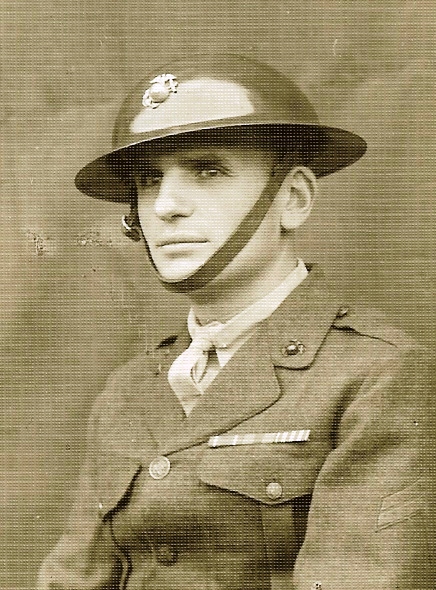
When the robbers had desisted
And there wasn’t much to do,
Then the Fourth was called to China,
To Shanghai the Chaumont flew,
Now for years we’ve been in Shanghai,
What a peaceful life to lead!
Only two small wars to cheer us;
All we do is sleep and feed
An excerpt from Clarence A. Beiliel’s poem The Fourth Marines
If Peking was the political capital of China, Shanghai could claim to be the country’s commercial capital. Before the arrival of the Europeans, Shanghai was an important trade center for the central coast of China. However, accounts of the city describe it as a small and overcrowded city surrounded by a stagnant stream. Soon however under Western and later Japanese influence the surrounding areas where formed into a modern city that kept pace with any large Western or Japanese metropolis. Of the foreign portions of the city, there was a French governed section and an International Settlement governed by an English dominated municipal council. Marines utilized Shanghai from the time the first ships of the U.S. Asiatic Fleet began visiting in the 1850’s, but they never stayed long.
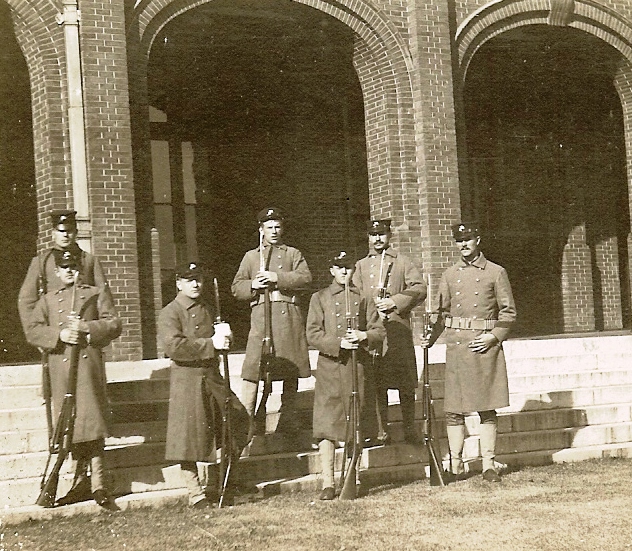
Marines from the USS Baltimore in Shanghai in response to the Mixed Court Riots of 1905
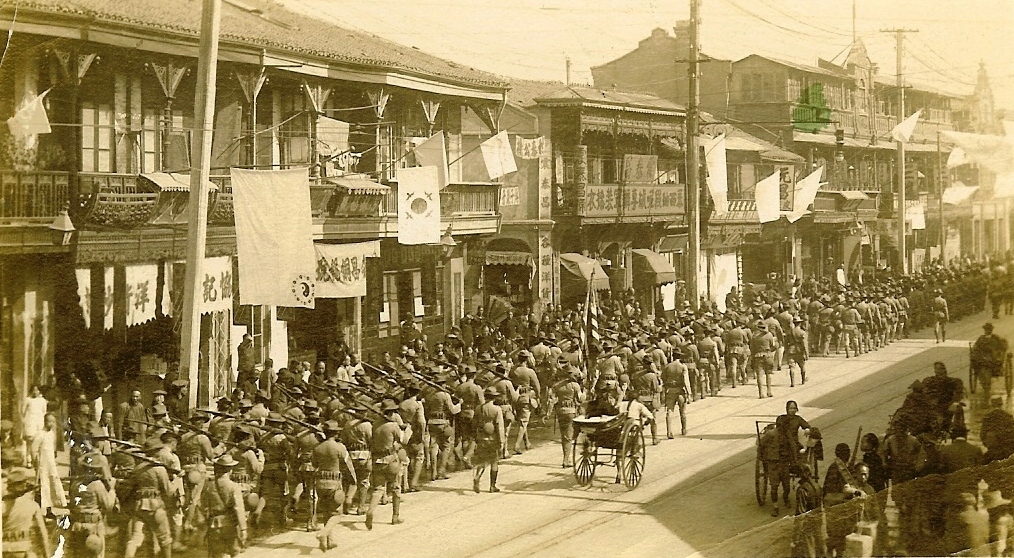
Marines of the Asiatic Fleet marching through Shanghai, c.1911
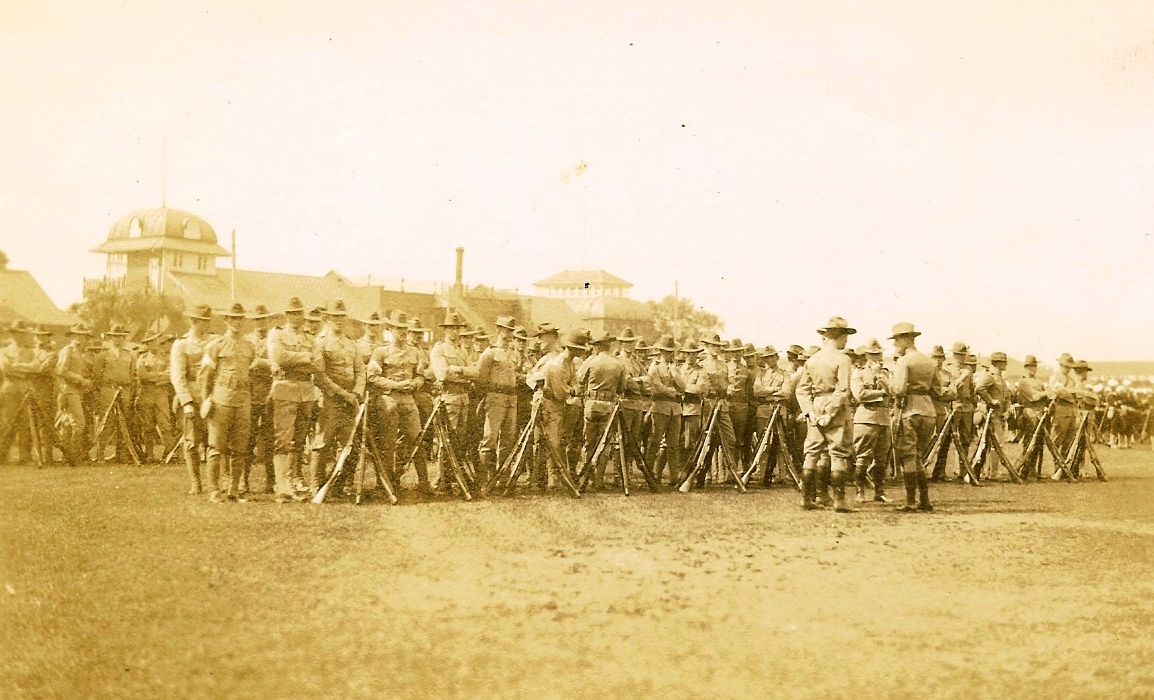
Marines and Sailors from the Asiatic Fleet mass on the Shanghai Race Track, May 1913
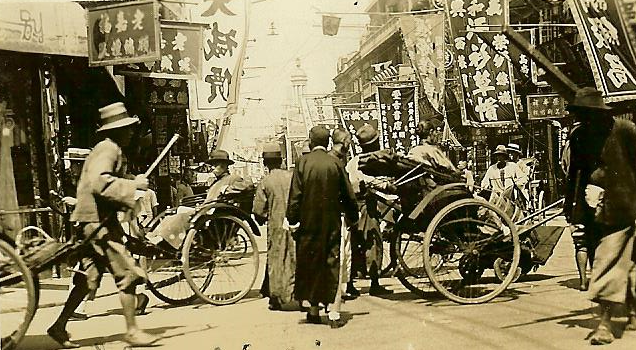
A Shanghai Street, c 1935
From the 1850’s through 1927, Shanghai should be viewed as a place where ships of the U.S. Asiatic Fleet could be repaired and provisioned. The city also served as a popular liberty port with high quality hotels, restaurants, movie theaters, racetracks, and fine clubs. Along its lengthy riverfront and behind its famous bund, the city harbored a number of seedy bars. During the Mixed Court Riots of 1905, Marines from the USS Baltimore landed briefly to secure US interests. When fighting threatened the city during the first and second Chinese civil wars, the temporary landing of foreign forces (including Marines) resulted in the warring sides restricting their activities to outside the city. After WWI the city’s stately club scene seemed to be eclipsed by the popularity of fast paced night clubs, bars, and cabarets. The Shanghai Navy YMCA noted the city offered entertainment that could be rated first class, second class and no class! Of Shanghai, one Marine wrote home in 1933:
“...in and out of this vast crowd of Orientals, rickshaws and automobiles seem to be crazily dashing in every direction with random recklessness. People getting knocked down or run over getting up smiling if they can and no one caring anything about it. Honestly there is so much excitement going on and so many strange and usual sights and happenings that it is useless for me to try and describe it in less than a book.”
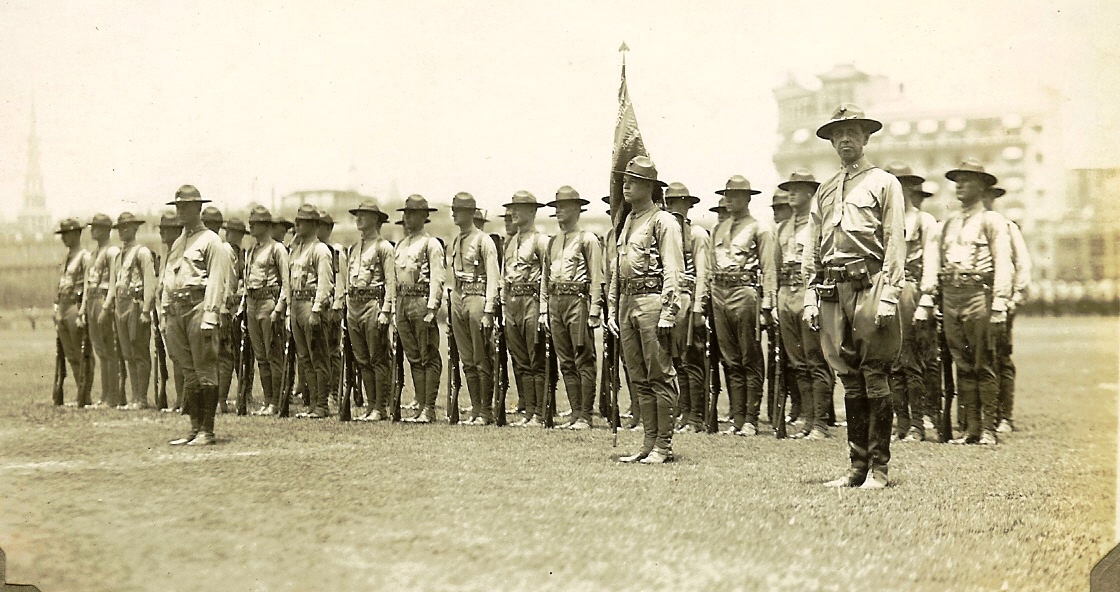
22nd Company, 4th Marines. On the parade ground c. 1932
During the 1924 Kiangsu-Chekiang War Marines from the Asiatic Fleet briefly landed to protect vital facilities along the Wangpo River such as the Standard Oil storage tanks and the power station. In 1927 Chinese Nationalist began to consolidate their hold on China by moving against warlords operating in the Yangtze Valley. As the Nationalists advanced they occasionally attacked foreigners along the river valley. After the Nationalists over ran the British Concession in Hankow, it was feared Shanghai would also suffer the same fate. When Japan and a number of European powers rushed reinforcements to the city, Shanghai-based American merchants called upon the U.S. Government for assistance. In response to their call, the 4th Marine Regiment boarded the USS Chaumont at San Diego and raced across the Pacific. Arriving in the early morning hours of 24 February 1927, the Marines lined the ship’s rails expecting to engage immediately in combat. They were disappointed, Shanghai was calm- the Nationalists had no intention of provoking the great powers and notified the Shanghai municipal government there would be no sacking of the city. Although liberty was soon granted, the Chaumont Marines for the next month had to return aboard the ship each night until the State Department and the Navy could agree to mission for the Marines. On 21 March, in response to fighting between forces loyal to Chiang Kai Shek and Communists members of his own Nationalist party, the 4th Regiment was finally allowed to permanently disembark to protect American lives and property. But apart from a few foot patrols near some of the fighting, the Marines were mere spectators to this inter-Chinese conflict.
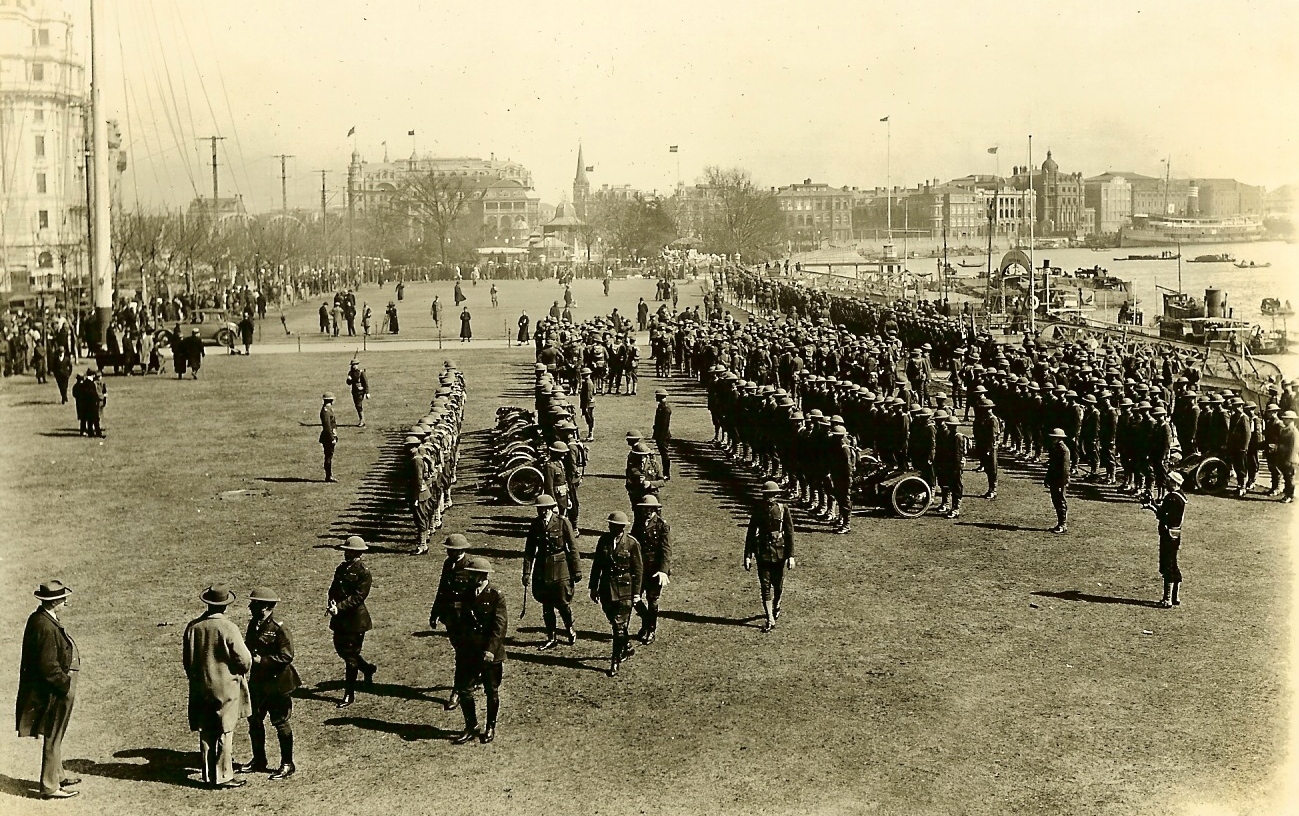
The 4th arrives on the Shanghai Bund, 1927

Old Blue: the 4th Marines flag

Company B, 4th Marines, c. 1934-35
At the end of March Brigadier General Smedley Butler arrived with elements of the 3rd Brigade followed by the 6th Marines over the next two months. However, when fighting between Nationalist and the warlords shifted north from the Yangtze Valley, Gen Butler moved the 6th to Tientsin where they remained until their withdraw in January 1929.
With Shanghai now quiet, the Marines moved from very poor, mosquito ridden, temporary billets along the river to newer in billets scattered around the western portion of the international settlement of the city. Unlike Peking, Marines during their stay in Shanghai never possessed centralized permanent quarters and so made due with rental properties of varied quality. Of course any discomfort they may have felt was offset by the city’s many diversions including a number of complementary invitations to dances, cabarets and clubs. Pvt Arthur Schaeffer wrote home “The Marines draw more attention and respect here than any other military service in Shanghai. People go out of their way just to do you a service….Yes sir! We sure have a “rep” here.”
As noted above the 4th Marines enjoyed a relatively good life in Shanghai that balanced social events with military activities. The 4th had its own band and a Drum and Trumpet Corps. Athletics played a big part of their China experience with baseball in the spring and summer and football at Thanksgiving. In addition the Marines learned rugby and took on British army and navy teams and even had a kendo team.
Click here for the history of the 4th Regiment's weekly publication: The Walla Walla

4th Marine Rugby Team in Action
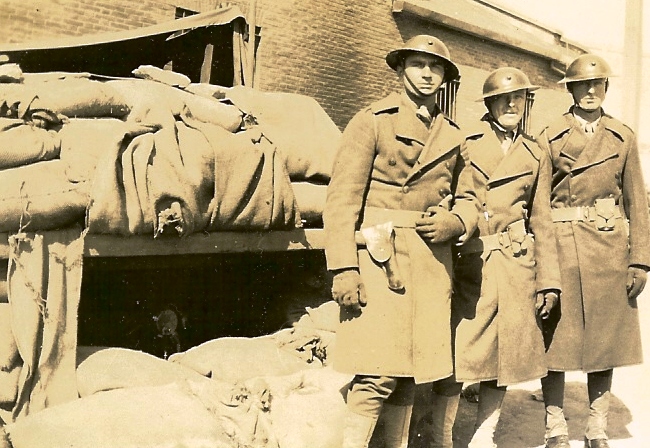
Marines Along the Soochow Creek....During the 1932 Battle for Shanghai
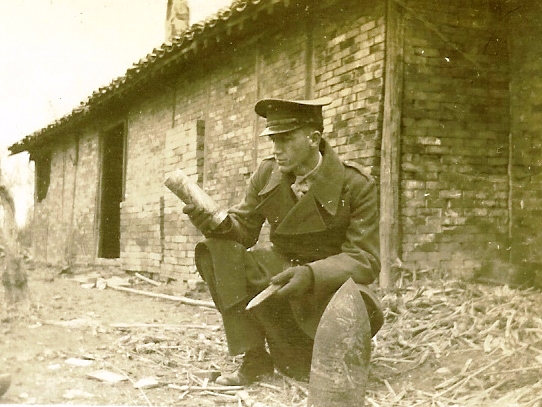
A Marine surveying the scene of the fighting outside Shanghai 1932
The next big test for the 4th Marines came in 1932 when fighting erupted between Japan and China as a result of Japanese moves in Manchuria. In January of 1932 Japanese and Chinese troops clashed in the Shanghai suburbs of Chapei and Hongkew. With refugees from the fighting frantically trying to escape to the International Settlement the Marines along with the British, and Italians were called upon to seal the settlement off from the fighting. The Marines took up positions along the Soochow Creek from Robison Road to Carter Road, and from Gordon Road south to Avenue Foch.

Cpl Donald Anderson used a Marine tourist map to record the 4th Marine positions (red shaded areas) during the 1932 crisis
Through the cold and damp winter and spring of 1932 the Marines protected behind sandbags or patrolling open in the open along the Soochow ensured the International Settlement was not harmed. That said, the Marines did on occasion allow some refugees along with wounded Chinese civilians and soldiers the opportunity to seek safety in the Settlement. But they were fearful of allowing too many refugees into the International Settlement as they felt the war would continue behind their lines. A number of Marines wrote of the sadness from of witnessing the suffering of the Chinese civilians that they were powerless to help.
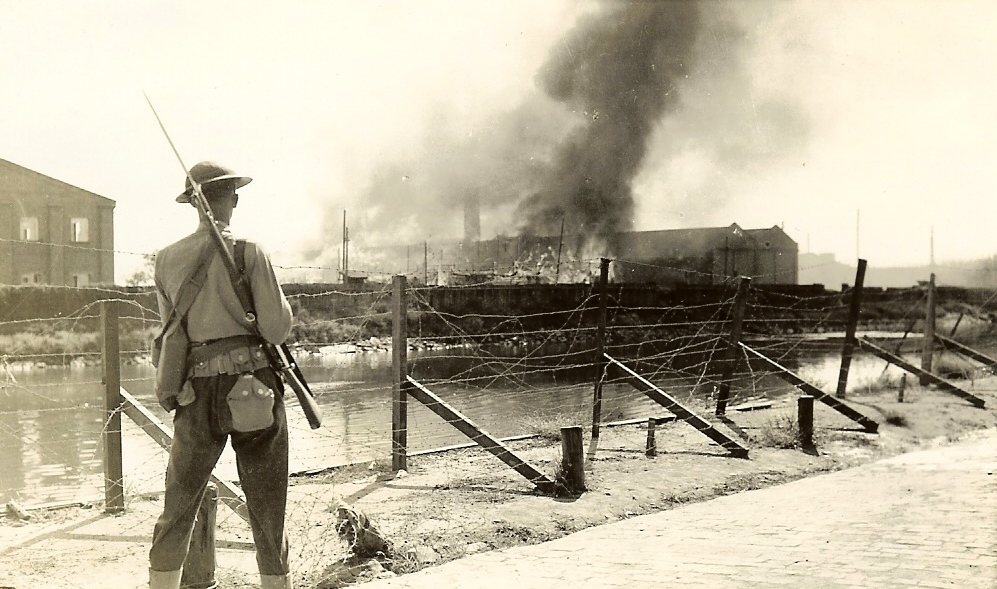
Back on the Soochow: A Marine watches a building burn across the creek, summer 1937
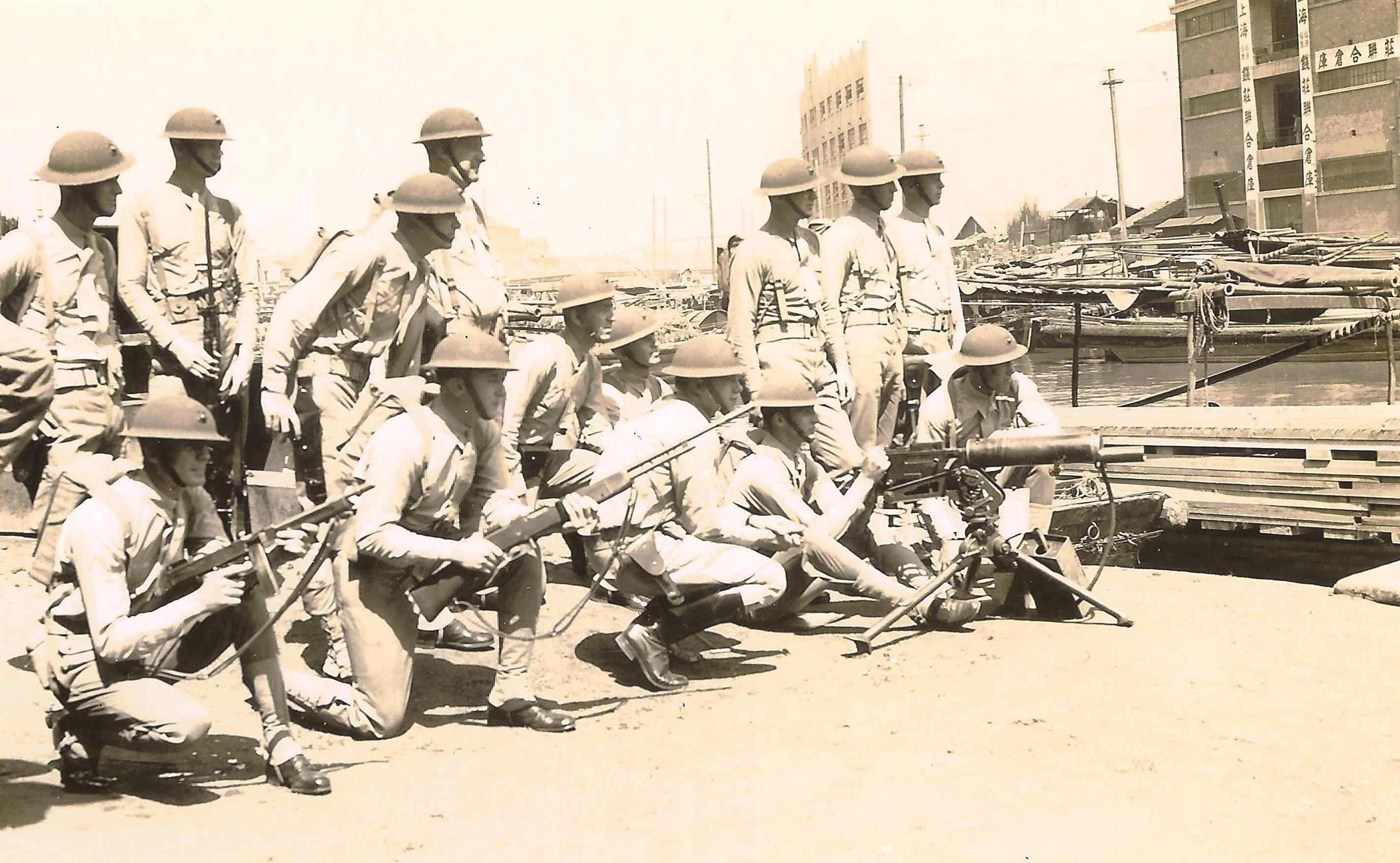
Marines of Company F, 2nd Battalion
Following the winter-spring fighting things settled down and Shanghai returned to normal for a few more years. But during August of 1937 fighting again erupted in Shanghai as the Chinese initially tried to drive the Japanese out of the city and Japanese aggressively counterattacked. In the heat of the summer, the 4th Marines returned to their old positions along the stinking, mosquito infested Soochow creek. The fighting they witnessed was far more intense than in 1932.

The Chapei District in flames
Many Marines suffering from dysentery endured weeks of repeated bombardment from wayward Chinese bombs or short landing Japanese artillery shells. Although they joked amongst themselves about their courage of being under fire, the fighting took a physical and emotional toll. If that wasn’t enough, the Marines had to contend with Japanese soldiers repeatedly trying to use the International Settlement as a jumping off point for new attacks along the creek while Chinese guerillas infiltrated to attack Japanese civilians and businesses within the International Settlement. Again the scope of the fighting brought the 6th Marines back to Shanghai for a few months to help the 4th patrol the International Settlement.
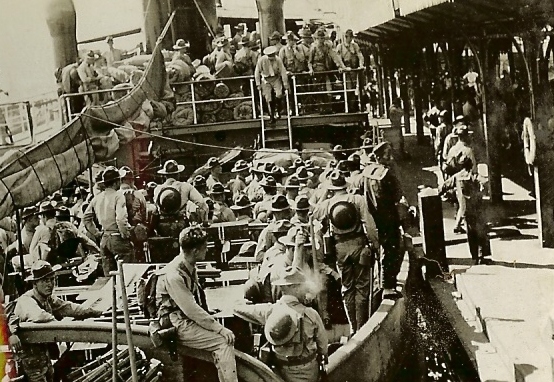
The arrvial of the 6th Marines, 1937
Cpl James Palmer writing his future wife in mid-October 1937 noted “We are all ‘shook’ up and a little balmy from all the big explosions near our dugout. I am plenty glad to see a little peace come our way now it is about over, I’ll tell you I have been in some hot spots several times and far from sure of getting out…someday I’ll tell you all the things I thought along with my shaking.” For another more detailed description of what it was like for one Shanghai Marine along the Soochow follow the link to Cpl Leonard Dombroski’s story. When it was over two million refugees were alleged to have passed through the international zone before the fighting moved westward. Not a day would go by when Marines patrolling their sectors did not find several Chinese citizens dead from starvation in the streets or fished bloated corpses out of the Soochow. By November 1937 the Japanese pushed the Chinese out of Shanghai and its suburbs and things calmed down enough for the Marines to put away their “Iron Kellys” and resume wearing their campaign hats.
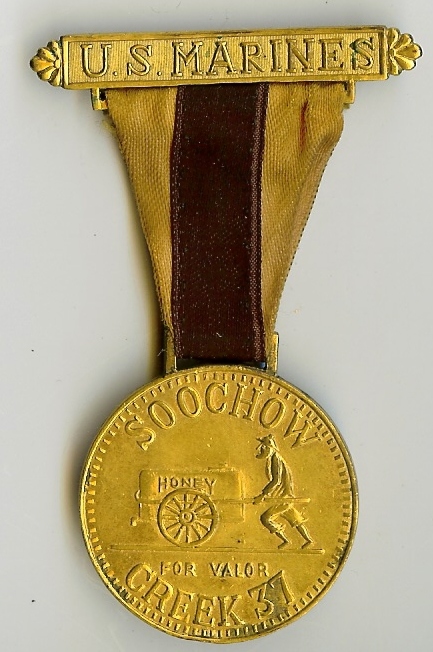
The Soochow Creek Medal: A "Spoof" medal the Marines awarded themselves during both the 1932 and 1937 Battles for Shanghai (see the Artifacts Section for more infomation).
But with the Japanese firmly in control of the Chinese portion of Shanghai and the surrounding countryside, it was only a matter of time before the they would be moving against the International Settlement in an attempt to control the entire city. For the men of the 4th routines returned to pre-conflict levels, but now there were private concerns of getting Stateside before a coming conflict with Japan.
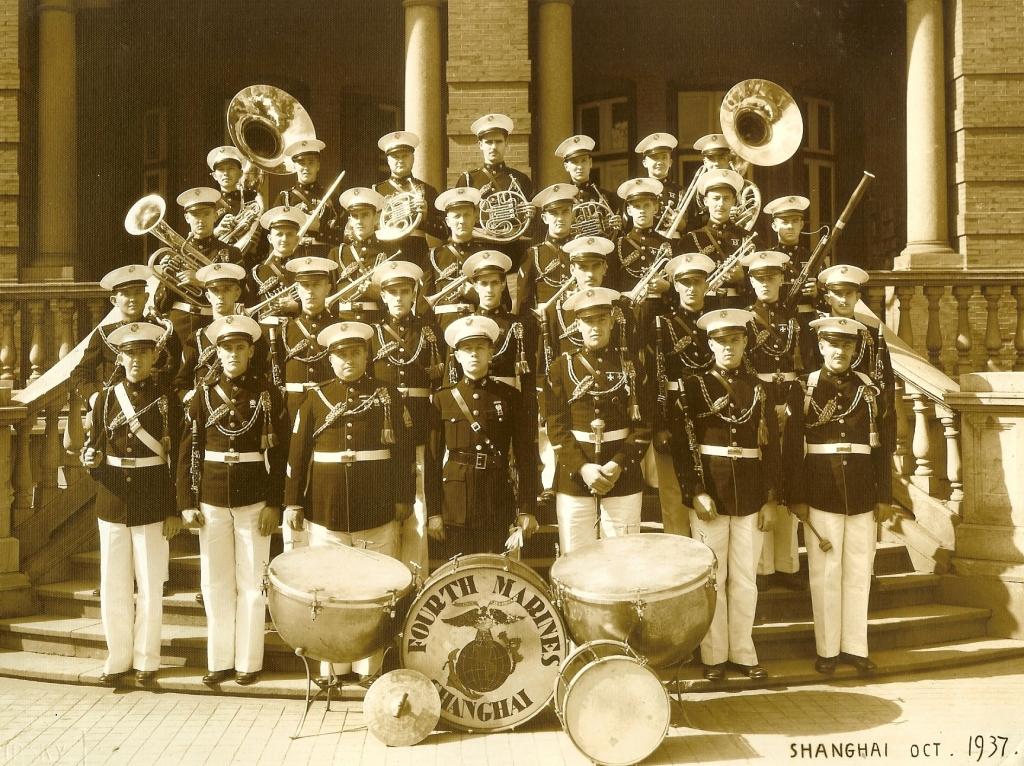
The Four Marine Band. Photo courtesy the family of Maj General Price
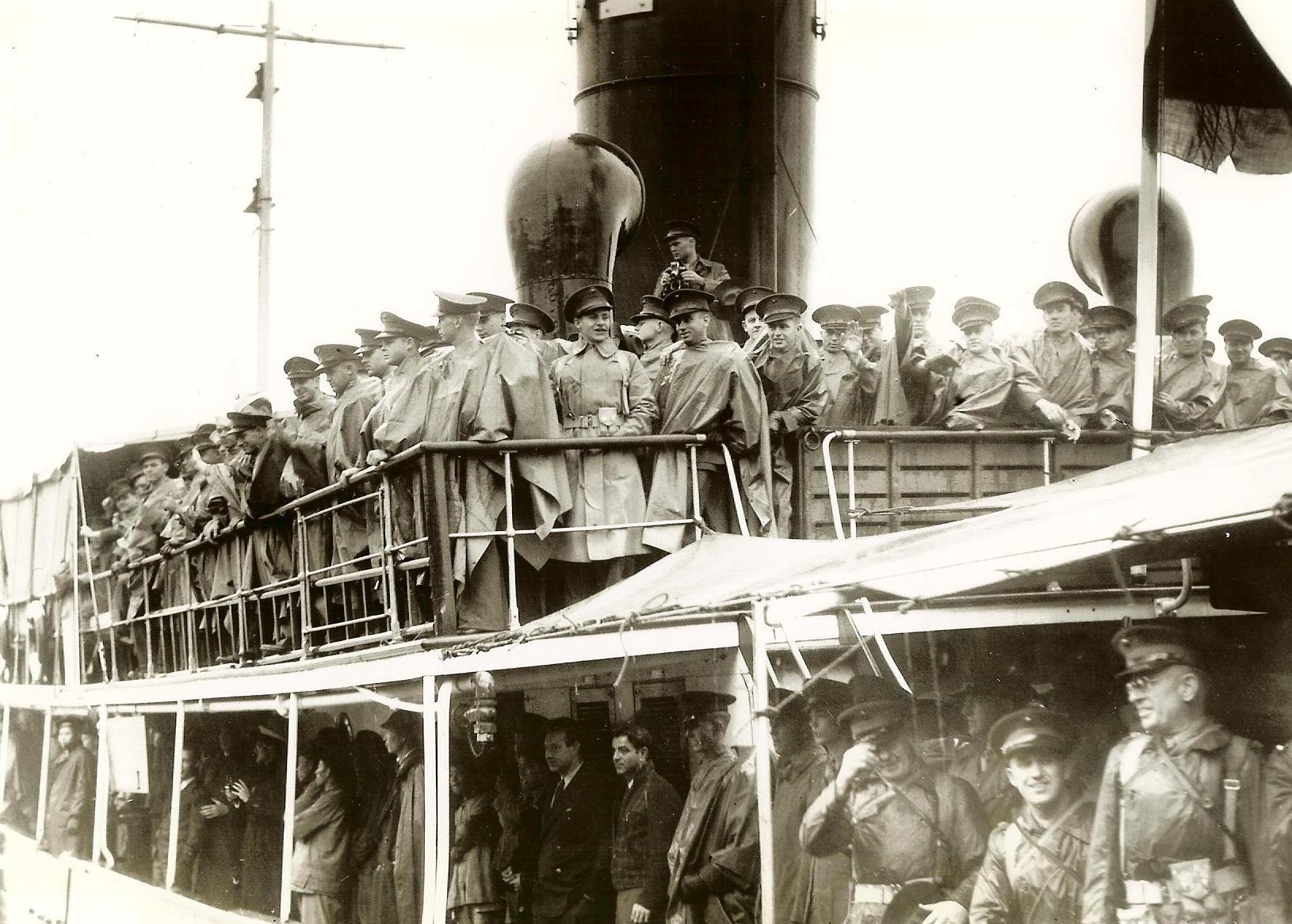
November 1941, with the Band playing "Aloha", the 4th Marines depart Shanghai.
Through 1940 and 1941 conditions inside the International Settlements became tense following a number of altercations. After the start of WWII, the British withdrew their forces from the International Settlement and the Japanese seemed to step up harassment of the Marines and the local civilian population. It was apparent to many in the city, war was coming. Slowly the numbers of Marines in the were drawn down. But like the Peiping Marines, the State Department was loath to allow their complete withdrawal. After debating the issue through the fall of 1941, the State Department finally agreed in mid-November 1941 to evacuate the 4th. On the 27th and the 28th of November the 4th Marines left Shanghai aboard the chartered liners President Madison and President Harrison for the Philippines. The 4th Marine Regiment’s fourteen year association with the city was now permanently severed.
After World War II war the Marines briefly returned to Shanghai to help with the evacuation of American citizens in 1948 as Communist forces began their final push toward the city. But with their work complete following the evacuation, the Marines left Shanghai never to return under arms.
